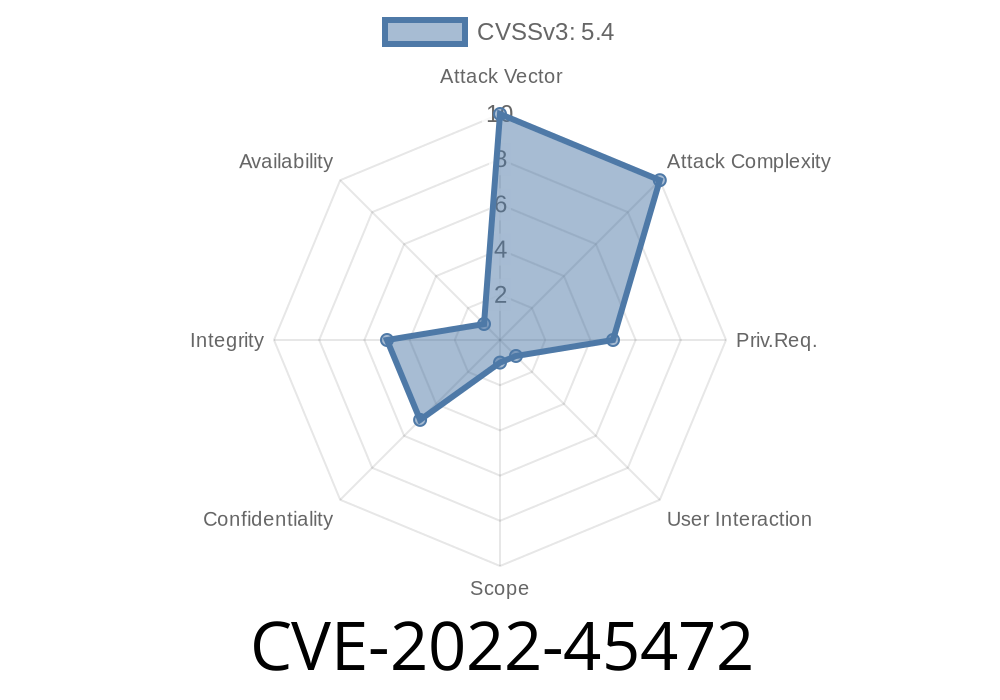In this article, we'll be exploring CVE-2022-45472, a dangerous DOM Cross-site Scripting (XSS) vulnerability that affects CAE LearningSpace Enterprise (with Intuity License) image 267r patch 639. To give you a complete understanding of the issue, we will provide actual code snippets, original references, and exploit details. We aim to present this in a way that is easy to understand, using simple American language.
Background
CAE LearningSpace Enterprise is a powerful Learning Management System (LMS) for medical simulation and healthcare training. It offers numerous features to help organizations efficiently manage their courses, resources, and performance tracking. Unfortunately, an XSS vulnerability has recently been discovered in the system that can allow attackers to execute malicious scripts on users' browsers, potentially compromising user data and credentials.
Vulnerability Details
The CVE-2022-45472 vulnerability is related to the _ontouchmove and _onpointerup event handlers in the CAE LearningSpace Enterprise application. An attacker can exploit this vulnerability by injecting malicious JavaScript code into these event handlers, which then gets executed when a user interacts with the affected functionality.
To better understand how to exploit this vulnerability, let's take a look at a simple code snippet that demonstrates this:
<!-- Example code to trigger the XSS vulnerability -->
<a href="#" _ontouchmove="alert('XSS!')" _onpointerup="alert('XSS!')">Click me!</a>
In this example, we have an anchor (link) element that has the malicious JavaScript code injected into its _ontouchmove and _onpointerup attributes. When a user clicks or interacts with the link, the malicious JavaScript code gets executed, causing a simple alert box to pop up with the text "XSS!". This is just a harmless example, but in reality, an attacker could inject much more harmful scripts that can steal user data, credentials, or even take over user accounts.
This DOM XSS vulnerability affects all instances of CAE LearningSpace Enterprise with Intuity License image 267r patch 639.
References
The vulnerability was first discovered by the security researchers and documented in the following sources:
1. CVE-2022-45472 on the NVD (National Vulnerability Database)
2. CVE-2022-45472 on the MITRE CVE® List
Mitigation
To mitigate this vulnerability, administrators running CAE LearningSpace Enterprise should update their systems to the latest version, which contains a patch that addresses this specific XSS issue. Additionally, implementing strict Content Security Policy (CSP) rules can help prevent the execution of unauthorized scripts, thus reducing the possible impact of XSS vulnerabilities.
Conclusion
CVE-2022-45472 is a critical DOM XSS vulnerability that affects CAE LearningSpace Enterprise (with Intuity License) image 267r patch 639. By exploiting this vulnerability, an attacker can launch sophisticated attacks that can compromise user data and credentials. Therefore, it's crucial to apply the appropriate patches and follow recommended best practices to secure your LearningSpace Enterprise system against this threat.
Timeline
Published on: 11/23/2022 06:15:00 UTC
Last modified on: 11/26/2022 03:36:00 UTC
